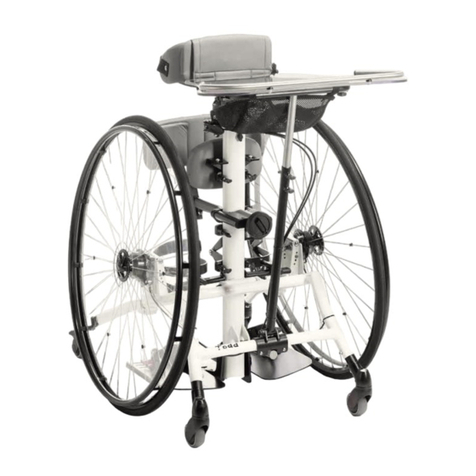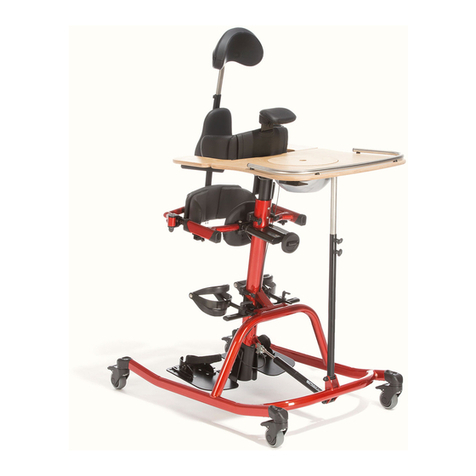3
Content
1. Preparation of the upright trainer for use ......................................................................................4
1.1 Delivery.........................................................................................................................................4
1.2 Safety measures prior to use........................................................................................................4
1.3 Safe disposal ................................................................................................................................4
1.4 Where to store the Instructions for use.........................................................................................4
2. Product description..........................................................................................................................5
2.1 Material information ......................................................................................................................5
2.2 Handling and transport .................................................................................................................5
2.3 Application areas, use according to the intended purpose ...........................................................6
2.4 Use not in accordance with the intended purpose / warning guidelines.......................................7
2.5 Equipment for basic model ...........................................................................................................7
2.5.1 Equipment acc. HMV (Medical Aids Register).....................................................................7
2.6 List of accessories ........................................................................................................................8
2.7 Product overview ..........................................................................................................................8
2.8 General settings............................................................................................................................9
2.9 Getting in and out .......................................................................................................................10
3. Settings ...........................................................................................................................................11
3.1 Angular adjustment of the central column ..................................................................................11
3.2 Height adjustment on the central column ...................................................................................11
3.3 Footplate.....................................................................................................................................12
3.4 Divided footplate.........................................................................................................................12
3.5 Heel edges..................................................................................................................................13
3.6 Footstraps...................................................................................................................................13
3.7 Knee pelotte pads.......................................................................................................................13
3.8 Pelvic frame................................................................................................................................14
3.9 Combined spine and pelvic pelotte pad......................................................................................15
3.10 Buttocks pelotte pad .................................................................................................................16
3.11 Ventral pelvic pelotte pad..........................................................................................................16
3.12 Chest pelotte pad with lateral guide .........................................................................................17
3.13 Backstrap..................................................................................................................................17
3.14 Back pelotte pad.......................................................................................................................18
3.15 Headrest ...................................................................................................................................18
3.16 Therapy tables ..........................................................................................................................19
3.16.1 Therapy table with depression ..............................................................................................19
3.16.2 Adjustable arm supports ........................................................................................................20
3.17 Chin support .............................................................................................................................20
4. Repairs and cleaning .....................................................................................................................21
4.1 Cleaning......................................................................................................................................21
4.2 Repairs .......................................................................................................................................21
4.3 Spare parts .................................................................................................................................21
4.4 Duration of use and re-use .........................................................................................................21
5. Technical data.................................................................................................................................22
6. Guarantee........................................................................................................................................22
7. Identication ...................................................................................................................................23
7.1 EC declaration of conformity.......................................................................................................23
7.2 Serial number / date of manufacture ..........................................................................................24
7.3 Product version...........................................................................................................................24
7.4 Issue of the document ................................................................................................................24
7.5 Name and address of the manufacturer, specialist dealer supplying the product .....................24





























